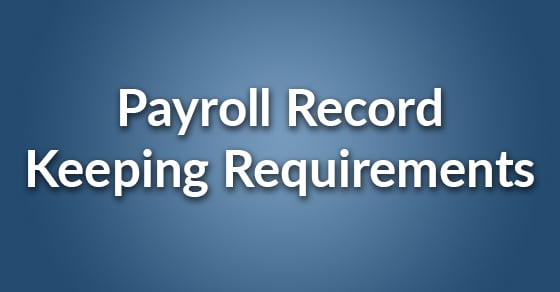
All employers are required to keep certain records of payroll. Most know about W-4s, I-9s, and paystubs but there are others to watch out for as well. Here are two examples of records you should be keeping if applicable.
Fringe benefit records
If you are offering any fringe benefits (even required ones) you need to keep records of them. Some examples in general are:
- Health insurance,
- Educational assistance,
- Adoption assistance, and
- Dependent care assistance.
The required record differs depending on the benefit but at the very least you should have dates and amounts paid for anything involving payroll.
There isn’t necessarily a defined amount of time that these records need to be kept. A good default is four years after the return involving those benefits is filed, six years to be extra safe.
Unemployment tax records
Just like fringe benefits, wage and unemployment payment data should be kept for at least four years. Also keep in mind you have federal and state unemployment records.
Information that should be kept includes:
- Total compensation for the calendar year,
- Total compensation subject to federal and state unemployment tax (varies by state and even individual case), and
- Unemployment contributions made.
How long you have to retain these records can differ per state.
Complex task
Paying employees is a complex task on its own; naturally, the record keeping involved can be challenging as well. HomeWork Solutions’ household employee payroll services help household employers handle all this record management, give us a call to find out more.
